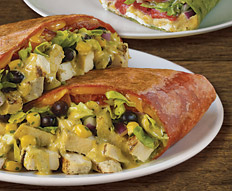Rising commodity costs are threatening to destroy any kind of optimism operators held that they were climbing out of the nation’s economic woes.
The costs present a consistent challenge to Togo’s, for instance, as it plans on opening 50 units in 2012 and develop the franchised concept beyond its 244 stores.
“The rising commodity prices can negatively impact everything we’re trying to do as a brand,” Togo’s vice president of branding and marketing Renae Scott says.
Togo’s isn’t alone in the food inflation battle. When it comes to food costs, quick-service restaurants are feeling a persistent pinch threatening growth. In recent National Restaurant Association (NRA) surveys, operators cite the economy as their top challenge, with food costs a surging No. 2.
Prior to the recession, wholesale food prices had been on an upward track, rising 7.6 and 7.7 percent in 2007 and 2008, respectively. Though 2009 saw a decline, prices jumped 4.9 percent in 2010. Thus far in 2011, wholesale food inflation is running at a 7.8 percent increase.
“If it continues to rise at this rate, it will be the highest single-year increase in nearly 30 years,” says Hudson Riehle, senior vice president of research at the NRA.
The 2011 numbers are staggering: flour has jumped 28 percent; butter 24 percent; cheese and beef 15 percent; and pork 13 percent.
“Those are the basic ingredients for a lot of cuisines … and the typical restaurant operator has to effectively deal with this rate of growth,” Riehle says, noting that U.S. Department of Agriculture forecasts predict no immediate relief.
In an effort to help margins, many restaurants are highlighting products with more favorable food costs.
Each summer, for instance, Togo’s would traditionally showcase its Turkey Avocado sandwich. As avocado prices swelled, however, Togo’s dropped the annual promotion and replaced it with a turkey-and-cheese sandwich among the brand’s top sellers.
“We might have had something planned, but the volatility in the commodity markets demands flexibility,” Scott says, adding that Togo’s also developed a line of toasted wraps featuring more economical commodities.
With one-third of the typical sales dollar traditionally earmarked for marketing, real estate, and overhead, some operators are reallocating advertising dollars to more cost-effective social media. Others are working with landlords and financial institutions to create real estate cost savings.
In many franchise systems, the corporate office has heightened its involvement with operators to help them navigate the commodity climate.
At Auntie Anne’s, director of purchasing Dale Smucker uses the company Intranet to provide franchisees information on commodity price movements, as well as tips for maximizing the costs of goods and inventory levels. Store support representatives in the system also visit each store five times annually to review store-level economics and consult on a range of money-saving issues, including efficiencies, menu mix, and waste.
“There’s ongoing education and information with our franchisees to help them make smart decisions about their business model,” says Heather Neary, chief marketing officer for Auntie Anne’s.
Another option operators have to fight rising commodity costs, unpopular as it may be, is raising menu prices. Last January, Togo’s installed its first price increase in three years, specifically heightening menu prices dealing with high commodity costs. The sandwich chain is now exploring another price hike in early 2012.
“It’s the reality of business now, and a place where we can help our franchisees as the commodity fluctuations continue,” Scott says.
With a menu of more than 40 sandwiches, many featuring cost-rising commodities,
Togo’s might also reduce the breadth of its menu. A sleeker menu should be unveiled in the first half of 2012.
“We’re going to focus on our core products and eliminate the low-selling items with associated higher food costs,” Scott says.
Studying the markets, Smucker looks to lock in favorable prices on a quarterly, bi-annual, or even annual basis for Auntie Anne’s core ingredients. In September 2010, he secured a 15-month contract on butter that provided hefty savings.
“Based on the information I was gleaning, it was important to look at butter long term,” he says. “We’ll definitely keep looking at the markets to control costs.”
Eager to generate greater efficiencies in the restaurant supply chain, many restaurants are working directly with vendor partners to ensure the best price is obtained.
The good news for operators? Suppliers and distributors are also becoming more active in helping their foodservice clients find cost-cutting solutions and efficiencies. This was an evident theme at the International Foodservice Manufacturers Association’s (IFMA) gathering in September.
“We’re all about the consumer now. Suppliers can’t just sell the product and then get out of the way,” Foodmix Marketing Communications vice president John Schuller told the IFMA audience.






